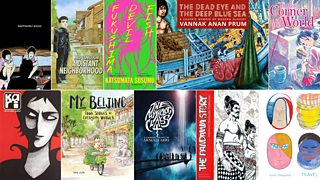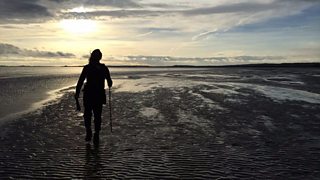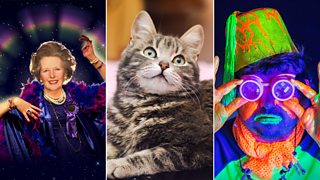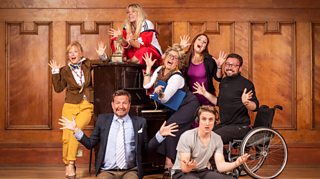Fantasy to reality: The designer who brought Tolkien's Middle-earth to the screen
24 August 2018
Tolkien illustrator ALAN LEE swapped Dartmoor for a posting in New Zealand as conceptual designer on Peter Jackson's Lord of the Rings trilogy. Ahead of an at the Edinburgh International Book Festival, the Oscar winner reveals how the fantasy became reality.

The big move: From book illustrator to movie concept design
Most of the work I do as an illustrator involves a small number of initial meetings with editors or writers, followed by many months of working in my studio and some nervous phone conversations about deadlines, and a general sense of relief and satisfaction when the work is delivered and printed.
Peter Jackson asked me to start at Helm's Deep on my first day at work in New Zealand
Working as a conceptual designer on The Lord of the Rings and Hobbit films was intensively collaborative: meetings with the director Peter Jackson every day; working alongside fellow designers, sculptors, props-makers, painters, and the visual effects teams.
My main task initially was to help get the process of building miniatures started by doing drawings of some of the environments, cities, towns and castles that would feature in the films. This would enable Peter and the other script writers to think in more detail about the action that would take place in and around those buildings.
One of the major episodes in The Two Towers would be the battle of Helm's Deep and, because Peter wanted plenty of time to plot out those sequences, he asked me to start there on my first day at work in New Zealand. I had made Helm's Deep the subject of one of the illustrations in the Centenary Edition of the Lord of the Rings, and Peter had broadly approved of that. But we needed to see it in much more detail, from every angle – and from the inside as well.

Over the next few weeks I did dozens of drawings, exploring every tunnel, chamber and turret, all the doors, stairways, ironmongery and furnishings. At the same time we were discussing the visual culture, the heraldry and arms and armour of its inhabitants, and its founder, Helm – represented by a statue in the forecourt.
I spent a lot of time on the Elven environments of Rivendell and Lothlorien, the ruined Dwarven Realm of Moria, and Minas Tirith.
As soon as the first overview of the environment was drawn, Richard Taylor, who had created , asked me to sketch out the ground plan onto a large sheet of polystyrene so that work on the miniature could start. I also worked on a Plasticine maquette of the whole valley. Alongside that, we also needed to make progress in the design of other parts of Middle Earth, and I spent a lot of time on the Elven environments of Rivendell and Lothlorien, the ruined Dwarven Realm of Moria, and Minas Tirith – which would feature so strongly in the The Return of the King.
My colleague, John Howe, had been given the task of designing Barad-dûr, Minas Morgul and other of the more evil places in and around Mordor, while Weta Workshop’s team of designers and model makers concentrated on the creatures, orcs, Fell-beasts and Mumakil, and all the armour and weapons that would be needed in the battles to come.



Dartmoor to New Zealand
One day, the postman delivered a parcel to Alan's home which would change his life forever. Interviewed after making the Lord of the Rings films, Alan told 麻豆官网首页入口 Devon and Cornwall, "Peter Jackson had been gathering visual material while working on the script and amongst that was my book. They made a leap to thinking, perhaps we should ask to see if Alan is available."
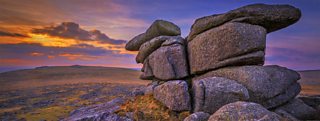
Jackson's team arranged for a courier to track Alan down at his home in Dartmoor.
"One day, I was sitting in my studio and I a parcel arrived containing two videos, Heavenly Creatures and Forgotten Silver, and a letter outlining the plans for making The Lord of the Rings and asking if I'd like to be involved.
"I phoned back after watching the videos because I was really curious. I hadn't actually heard of Peter Jackson. We had a great conversation and I agreed to go out to New Zealand and work with him, along with another illustrator, John Howe.
"We estimated I'd be out there for six months, just working on conceptual designs, but in the end I worked there for six years and got involved with every aspect of the design of the films, going from conceptual design onto working with the art department actually designing the sets and props.
As Alan recalls now, talking to 麻豆官网首页入口 Arts, "it was an extraordinary experience and I didn't think anything quite like it would happen again. I was wrong of course, and a second invitation led to a further six years of work on the Hobbit films"

The techniques that brought the creatures of Middle-earth to life
Most of the creature design was by Weta Workshop’s team of six designers, closely supervised by Richard Taylor and Peter Jackson. I contributed a few drawings of Treebeard and Gollum and other denizens of Middle-earth but the more crucial part of the process was the production of large numbers of Plasticine models, culminating in a highly detailed figure – for Gollum – and a full-scale puppet version of Treebeard’s head and shoulders, or the forks and branches that make up that part of his anatomy.
I have no doubt that it won鈥檛 be long before the actor behind a digital character is awarded an Oscar
These were both at Hobbit scale, or the size they would appear to us if we were hobbits, so that the actors playing Merry and Pippin – Dominic Monaghan and Billy Boyd – could be filmed sitting among the branches and conversing with the Ent who has just rescued them.
As soon as an approved design model is made, work begins on creating the digital version. The model is scanned, which gives an accurate, though not very high resolution CG model. This forms the basis for the very simplified versions used for pre-visualizing all the animated sequences, essentially animated story-boarding, and these will go through many iterations before becoming a definitive guide, both to the shooting crew and to the animators.
The animators will use either motion capture of a performer covered with tracking markers, or key-frame animation, or a combination of the two. In the case of Andy Serkis’ ground-breaking portrayal of Gollum, the whole process went through an evolution from simple rotoscoping (replacing a filmed image of the performer with a matching animated one) to trying to capture every detail of the actor's performance and facial expressions.
There has been some controversy over how much of the finished scenes is the work of the animators and how much the work of the performer, but having witnessed the incredible work of both I have no doubt that it won’t be long before the actor behind a digital character .
The Creatures department at Weta Digital was responsible for turning the design of the characters into something that could move convincingly, with digital bones, fat and muscles.
Treebeard had to be able to move without breaking into pieces, which raises the question of how flexible his bark should be. To avoid him looking too rubbery, the bark was separated into plates secured onto a more flexible subcutaneous layer, and moss, ivy and ferns added for cosmetic effect.
Thousands of hours are spent creating and nuancing all the elements in one figure and much of this process was far too technical for me to even begin to understand. At various points along the way, all the code is sent to 'The Render Wall' to be processed into something that can be viewed as a work in progress. It isn’t unusual for this to happen well over a hundred times before the shot is finalized. The whole process was overseen by Jim Rygiel and Joe Letteri.
My role during this part of the production was to produce artwork, mainly in Photoshop, as a guide for the compositors who are creating the finished shots. It is a quick way for Peter to be able to communicate what he would like to see. He will hand over the shots as he edits the film, and give a brief description of what he is looking for – many of the shots are of actors against a green screen – and artwork will be sent for his approval a couple a days later.
The fact that I had played a part in conceiving and designing the sets and miniatures enabled a degree of continuity and realism which helped to ground the film in a believable world. On a film set in a historical period, the design process would start with the accumulation of large amounts of reference material, but when the film is set in an imaginary world that material needs to be generated by conceptual designers.
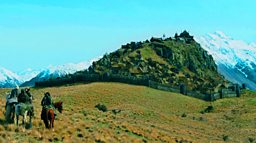


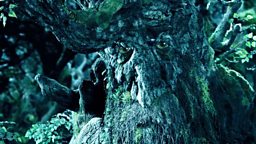
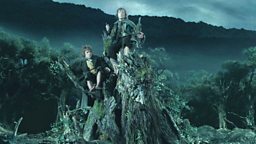
Alan Lee on Analogue v Digital
"My preference is for working in analogue – charcoal, pencils and watercolour; I like the organic and tactile nature of pigments, burnt wood and water, and the sense of working within a tradition. I enjoy the extra possibilities and effects offered by Photoshop, but a sense of limitless possibilities combined with a loss of connection is ultimately a bit dissatisfying.
"I have the same feeling about much of the recent output of Hollywood. I hope that good storytelling will prevail in the end, but I don’t like to think about the vast amount of creative energy and talent that is squandered by being allied to an execrable script. I’d love to see more films or programmes like Charlie Brooker’s brilliant Black Mirror series, where the ideas, performances and visuals are all well thought through and aligned."

Favourite Tolkien illustration work
I think the original centenary edition of The Lord of the Rings, which was where it all started for me, is still my favourite of my own illustration work, but it has been a pleasure being able to explore some of the earlier stories more recently, such as Beren and Lúthien and The Fall of Gondolin.
I do enjoy the quality of the printing and binding etc, and the fact that there aren’t a huge number of illustrations. Being able to add pencil chapter headings and tailpieces is always a pleasure. It is nice to be able to produce traditional illustrated books after all the years of working on the films.
is published by Harper Collins on 30 August 2018.
with Alan Lee is at the Edinburgh International Book Festival on Monday 27 Aug at 18:30.
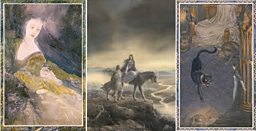
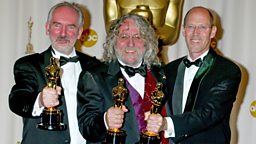
More from the Edinburgh Festivals 2018
-
![]()
Meet the six talented teens headed for the final of Eurovision Young Musicians.
-
![]()
How sights including Edinburgh Castle have been captured by artists.
-
![]()
Although manga originated in Japan, it is a cultural force throughout Asia.
-
![]()
The musician-turned-storyteller has gathered a huge archive over thousands of miles.
-
![]()
Take our quiz and try to separate the genuine titles from the ones we've made up.
-
![]()
Performers' picks for the Fringe, International Festival and Book Festival.
-
![]()
The Edinburgh Festival Fringe shows putting disability in the spotlight.
-
![]()
麻豆官网首页入口 at the Edinburgh Festivals
Join us at our hub at George Heriot鈥檚 School in the heart of Edinburgh for top shows.


